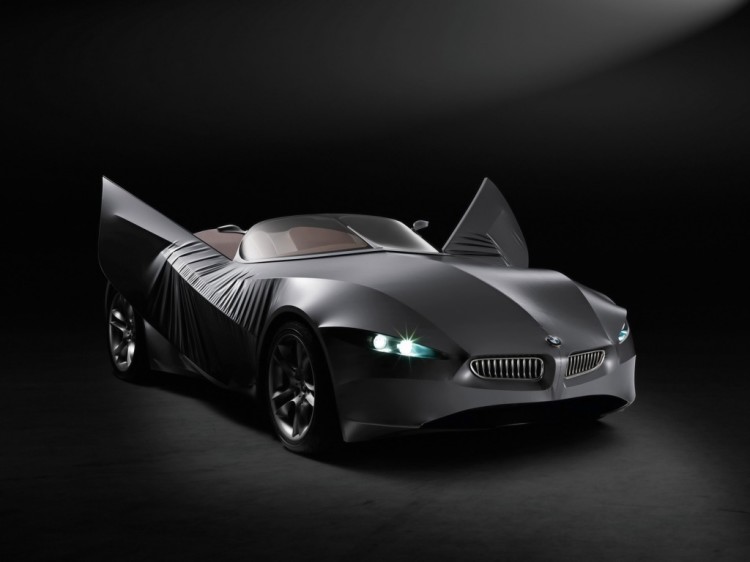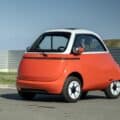GINA project started in 2001 and it was unveiled to the public for the first time in 2008. GINA stands for “Geometry and functions In ‘N’ Adaptions” and it was designed by a team led by ex-BMW’s head of design, Chris Bangle, who says GINA allowed his team to “challenge existing principles and conventional processes.”
What makes GINA Light Concept special are the surfaces covering the aluminum wire chassis. The flexible, stretchable water resistant translucent man-made fabric skin – polyurethane-coated Spandex, is resilient and durable. It resists high or low temperatures, does not swell or shrink and the movement does not slacken or damage the fabric.
The body changes its shape according to exterior conditions and speeds, and it also allows the driver to change its shape at will. The shape of the frame is controlled by electric and hydraulic actuators, for example, the headlights are revealed when small motors pull the fabric back in an eyelid like fashion.
At the rear-end, the taillights are visible through the soft material.
GINA features “bird wings” style of doors, a similar feature we’ve seen on the new BMW i8. Access to the engine can be gained through a slit that can open in the middle of the bonnet.
Inside the car, variability, form and function are united in an inseparable connection. Whenever selected functions are accessed, the driver also changes the appearance of individual car elements. Again, the car’s variability is adapted to suit the driver’s needs. This creates a close interaction between driver and car in various different situations.
When the car is parked, the steering wheel and the rev counter, speedometer and fuel gauge, which are vertically arranged on the center console, are in idle position. This provides the driver with maximum comfort upon entering the car. Likewise, the seat only assumes its optimized functional position and shape if and when the driver sits down on it.
As soon as you enter the car, the headrest, previously firmly integrated into the seat’s backrest, rises up automatically. At the same time, the steering wheel moves towards the driver and the instrument panel moves in the same direction. The information on the best driver-specific position of both steering column and seat is stored in the transducer. The engine is started simply by pushing the start/stop button, a feature now standard in all new BMWs.
At the time, the GINA Concept design has been rumored to serve as a base for many upcoming BMW models, from the lightweight materials to the design language. Looking in the current lineup, we can certainly see some design cues inspired by GINA, starting with the more angular and sleep headlights, and continuing with the heavily sculpted hood and side panels, and ending with the 3D shaped kidney grille.
As far as lightweight construction, BMW i sub-brand is fully invested in building lighter and sustainable vehicles, from carbon fiber to the use of recyclable materials.
Seeing the GINA Concept in person makes it even more special and emotional, so if you’re ever visiting Munich, stop by the BMW Museum across the BMW Welt building.




![GINA-Concept-[13]](https://cdn.bmwblog.com/wp-content/uploads/GINA-Concept-131-750x502.jpg)
![GINA-Concept-[2]](https://cdn.bmwblog.com/wp-content/uploads/GINA-Concept-21-750x502.jpg)


































































